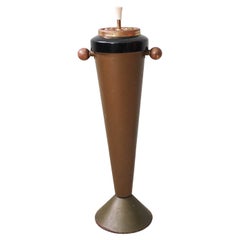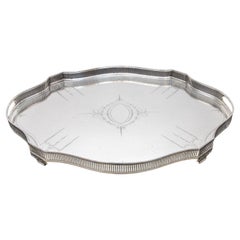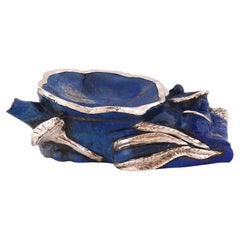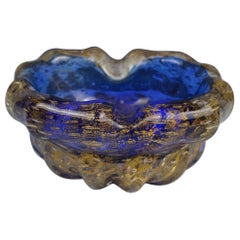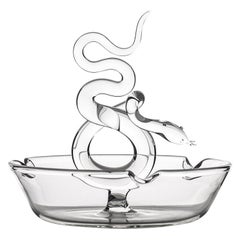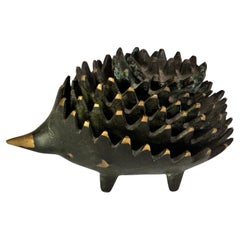Portugal - Ashtrays
to
2
3
1
3
1
1
2
2
2
4
2
1
1
1
1,487
824
4
2
2
4
4
4
1
Item Ships From: Portugal
Vintage Italian Ashtray, 1950's
Located in Lisboa, PT
This astray was produced in Italy and is original from the 1950's. It is made of brass and iron, and on the top is the ashtray. With a conical shape and two brass handles on the side...
Category
1950s Italian Mid-Century Modern Vintage Portugal - Ashtrays
Materials
Brass, Iron
$1,134 Sale Price
20% Off
Large Portuguese Silver Tray by Leitão & Irmão, Porto, circa 1887–1937
Located in Lisboa, PT
Large Portuguese Silver Tray by Leitão & Irmão, Porto, circa 1887–1937
Maker: Leitão & Irmão
Origin: Porto, Portugal
Date: Circa 1887–1937
Hallmarks: Portuguese Javali II mark (833 ...
Category
Early 20th Century Portuguese Portugal - Ashtrays
Materials
Silver
Contemporary Lapis Lazuli Ashtray by Alcino Silversmith with Sterling Silver 925
By Alcino Silversmith
Located in Porto, 13
Contemporary Lapis Lazuli ashtray with sterling silver 925 apllications is a modern piece by Alcino Silversmith 1902.
This piece was designed and...
Category
21st Century and Contemporary Portuguese Portugal - Ashtrays
Materials
Lapis Lazuli, Silver, Sterling Silver
Murano glass ashtray with 24 carat gold flecks
Located in Marinha Grande, PT
Murano glass ashtray made with cobalt blue glass fused with 24 carat gold flecks.
Very nice piece
Category
1950s Italian Mid-Century Modern Vintage Portugal - Ashtrays
Materials
Gold
$708 Sale Price
20% Off
Related Items
Contemporary Handmade Glass Serpentine Snake Ashtray Puro Liquor Deco Animal
By Simone Crestani
Located in Camisano Vicentino, IT
A meticulously hand-crafted glass ashtray by Simone Crestani, the Serpentine Ashtray is an enchanting piece from the Serpentine Collection, merging historical symbolism with modern a...
Category
21st Century and Contemporary Italian Modern Portugal - Ashtrays
Materials
Glass
$490 / item
H 5.91 in Dm 5.52 in
Brass Walter Bosse Hedgehog Sculpture Stacking Ashtrays 1950s Austrian
By Walter Bosse
Located in Auribeau sur Siagne, FR
Ashtray in painted metal, with a green and gold patina. The artist is Walter bosse, and this model is the luxury one.
Brass Walter Bosse Hedgehog Sc...
Category
1950s Austrian Mid-Century Modern Vintage Portugal - Ashtrays
Materials
Bronze
$614 Sale Price
20% Off
H 2.37 in W 4.73 in D 2.37 in
1935 ArtDeco Smokers Set Tray, Cigarette Case w/ Lighter by Ronson
By Ronson
Located in Van Nuys, CA
The 1935 Art Deco smoker's set includes a chromed tray with a chromed and black lacquered Desk Box with an Octette Touch Tip Lighter by Ronson.
This desk box features a sleek, black...
Category
1930s American Vintage Portugal - Ashtrays
Materials
Steel
$701 Sale Price
44% Off
H 2.5 in W 5.5 in D 11 in
Seguso Murano Purple Blue Pink Glass Shell Centerpiece Bowl with Gold Flecks
By Seguso Vetri d'Arte
Located in Barcelona, ES
One of a kind hand blown Murano shell bowl centerpiece in shades from pink to blue. Attributed to Seguso, Italy, 1960s.
This beautiful shell bowl has pink, purple and blue glass case...
Category
Mid-20th Century Italian Mid-Century Modern Portugal - Ashtrays
Materials
Gold Leaf
$1,219 Sale Price
20% Off
H 3.35 in W 10.63 in D 7.09 in
Art Deco Frankart Ash Tray
Located in Water Mill, NY
Art Deco Frankart ash tray or plant holder. Signed. Very good. Unrestored condition.
Category
Early 20th Century American Art Deco Portugal - Ashtrays
Materials
Metal
Solid Patinated English Bronze Crab Cancer Lidded Ashtray 420
Located in Los Angeles, CA
A large and heavy solid Bronze Ashtray in the shape of a Crab. This piece is a compliment as a decorative piece and also has a hinged top to be used as an ashtray for your perfect sm...
Category
20th Century English Mid-Century Modern Portugal - Ashtrays
Materials
Bronze
Murano Pink Silver Flecks Dark Purple Spots Italian Art Glass Bowl Ashtray
By Seguso Vetri d'Arte, Barovier&Toso, Archimede Seguso
Located in Kissimmee, FL
Beautiful vintage Murano hand blown, rich pink with dark spots Italian art glass decorative bowl. The piece has a biomorphic abstract shape, with decorative folds and indents. The bo...
Category
Mid-20th Century Italian Mid-Century Modern Portugal - Ashtrays
Materials
Silver Leaf
$750
H 2.75 in W 6.75 in D 7 in
Fontana Arte freeform glass ashtray, Italy 1950s
By Fontana Arte
Located in Milan, IT
Fontana Arte freeform glass ashtray, Italy 1950s
Category
1950s Italian Mid-Century Modern Vintage Portugal - Ashtrays
Materials
Glass
Barovier Toso Murano Pink Gold Flecks Art Glass Bowl with Air Bubbles
By Barovier&Toso
Located in Barcelona, ES
Amazing folded rim hand blown Murano glass ashtray / bowl with gold flecks and controlled air bubbles. Attributed to Barovier e Toso. Italy, 1950s.
Pink and grey glass spots and clea...
Category
20th Century Italian Mid-Century Modern Portugal - Ashtrays
Materials
Copper, Gold Leaf
$940 Sale Price
20% Off
H 2.37 in W 6.5 in D 4.34 in
Italian Designer, Ashtray, Brass, Italy, 1950s
Located in High Point, NC
A brass ashtray designed and produced in Italy, c. 1950s.
Category
1950s Italian Mid-Century Modern Vintage Portugal - Ashtrays
Materials
Brass
Antique Brass Tray with Arabic Koranic Calligraphy Writing Large Rectangular
Located in North Hollywood, CA
Antique Brass Tray with Arabic Koranic Calligraphy Writing.
Rectangular shape large brass tray with Islamic Koranic calligraphy writing and foliates patterns in the center.
Middle Eastern...
Category
Mid-19th Century Egyptian Islamic Antique Portugal - Ashtrays
Materials
Brass, Silver, Copper
$3,500
H 1 in W 39 in D 19 in
Mid-Century Italian Alabaster Ashtray, 1950s
Located in Palermo, IT
Mid-Century Italian alabaster ashtray, 1950s
It belonged to my grandfather, it is intact and in good condition. Factory seal.
Category
1950s Italian Vintage Portugal - Ashtrays
Materials
Alabaster
Recently Viewed
View AllMore Ways To Browse
Drift Studio
Dunbar Tambour
Dutch Bombe Commode
Dying Gaul Sculpture
Echizen Pottery
Edo Satsuma
Egyptian Metal Tray
Elephant Chest
Elephant Trophy
English Spode Copeland China
Etruscan Chariot
Eugene Cornu
Falcon Japanese Art
Famille Jaune Vase
Fantoni Copper
Fauna Danica
Federal Tiger Maple
Fiddle And Thread Flatware
